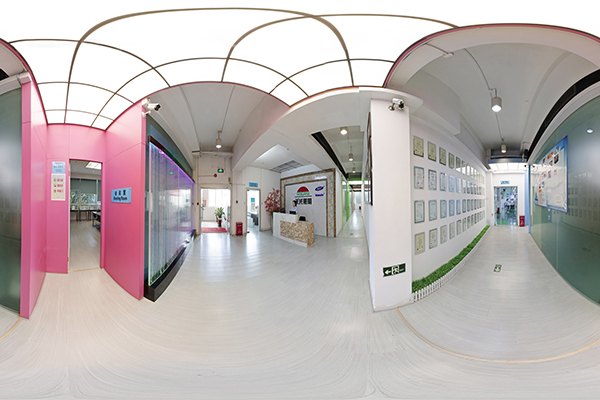Views: 26 Author: Site Editor Publish Time: 2025-02-05 Origin: Site
The latest research published in Nature Plants in 2023 reveals that the global LED plant lighting market is projected to exceed $1.5 billion by 2027, with the seedling cultivation sector accounting for 37% of this market. But do you know which light spectrum combination can help seedlings grow strong and fast? This article guides you through the golden rules of red-blue light ratios.
A 2022 study by the Fudan University team, published in New Phytologist, confirmed that blue light at 450–460 nm activates the COP1 protein, significantly suppressing excessive seedling elongation (experimental group height reduced by 28%). It is recommended that blue light constitute 20–35% of the spectrum during the seedling stage, with typical crops like lettuce and broccoli requiring ≥30% blue light.
Research from Chiba University in Japan found that at a blue light intensity of 2 μmol/m²·s, the stomatal density of Arabidopsis thaliana increased by 42% compared to white light, enhancing water use efficiency. It is suggested to use monochromatic blue light (wavelength 430–470 nm) for nighttime supplementary lighting.
Data from Plant Cell & Environment in 2021 showed that red light at 630–660 nm, combined with an irradiance of 85 μmol/m²·s, increased the photosynthetic rate of C3 plants (such as wheat and rice) by 31%. It is recommended that red light account for 40–60% of the spectrum, with Solanaceae crops (e.g., tomatoes, peppers) requiring ≥50% red light.
Experiments by the Chinese Academy of Agricultural Sciences demonstrated that a red-to-blue (R:B) ratio of 2:1 increased anthocyanin content in strawberry seedlings by 170% compared to pure red light. It is advised to increase the red light proportion three days before transplanting.

The light spectrum should be adjusted according to the growth stage of the plant. Different stages, such as germination, seedling growth, and transplanting, have varying light requirements. For instance, seedlings generally benefit from higher blue light during early growth to promote compact development, while red light can be increased later to boost photosynthesis and biomass accumulation.
| Plant Type | Light Configuration | Reference |
|---|---|---|
| Leafy Vegetables | B > 40% | Blue light dominance (Chen et al., 2020) |
| Fruit Vegetables | R:B = 3:1 | Red-to-blue ratio optimization (Wang et al., 2022) |
| Herbs | R = 50% + FR | Red light with far-red enhancement (Li et al., 2023) |
"B > 40%" indicates a dominance of blue light (greater than 40%) for leafy vegetables.
"R:B = 3:1" refers to a specific red-to-blue light ratio of 3:1, optimized for fruit vegetables.
"R = 50% + FR" suggests a configuration with 50% red light combined with far-red light, suited for herbs.
The references (e.g., Chen et al., 2020) indicate the studies or sources supporting these light configurations.
Different plant types require tailored light ratios:
Leafy Vegetables: B ≥ 35% (e.g., lettuce) to support healthy leaf development and prevent elongation.
Stem Vegetables: B ≥ 40% (e.g., celery) to encourage strong stem growth and disease resistance.
Flowering Plants: R ≥ 55% (e.g., African violets) to promote flowering and vibrant colors.
Adjust the light spectrum based on environmental conditions:
In high-temperature environments, reduce blue light to ≤25% to avoid stress and overheating.
In low-temperature conditions, increase red light to ≥60% to enhance cold resistance.
A 2023 study in PNAS cautioned that excessive red light (>65%) can disrupt the antioxidant system in seedlings, leading to oxidative stress. To mitigate this, it’s recommended to incorporate 5–10% green light as a buffer. When purchasing grow lights, look for "full-spectrum" certification with a wavelength continuity of >80 nm to ensure comprehensive coverage.
(Note: Specific parameters should be adjusted based on cultivar characteristics.)
Indoor Hydroponic Cultivation Yield Statistics
(Seedling Survival Rate, Annual Yield % R: % B: % F)
| Category | Item | Yield | Growth Period | Harvest Period | Remarks |
|---|---|---|---|---|---|
| Leafy Vegetables | |||||
| Spinach | Fresh Spinach | 25R:40B:35F | 35R:30B:35F | 40R:25B:35F | High-yield hydroponic type |
| Lettuce | Green Lettuce | 28R:38B:34F | 38R:30B:32F | 45R:20B:35F | Aeroponic greenhouse |
| Kale | Curly Kale | 30R:35B:35F | 40R:30B:30F | 50R:25B:25F | RVB+2:1 red-blue light ratio |
| Swiss Chard | Rainbow Chard | 35R:35B:30F | 45R:30B:25F | 55R:20B:25F | High-density hydroponic system |
| Fruit Vegetables | |||||
| Tomatoes | Cherry Tomatoes | 40R:40B:20F | 50R:35B:15F | 60R:25B:15F | RVB+3:1 red-blue light ratio |
| Peppers | Sweet Peppers | 30R:45B:25F | 40R:40B:20F | 50R:30B:20F | High-yield 40% light compensation |
| Cucumbers | Mini Cucumbers | 20R:50B:30F | 30R:40B:30F | 40R:30B:30F | High-efficiency 45% |
| Herbs | |||||
| Basil | Sweet Basil | 35R:35B:30F | 45R:30B:25F | 55R:25B:20F | RVB+3:1 high-efficiency type |
| Mint | Peppermint | 25R:50B:25F | 35R:40B:25F | 45R:35B:20F | High-yield 45% light compensation |
The percentages (R: Red, B: Blue, F: Far-red) represent the light spectrum composition used for each plant type.
The "Yield," "Growth Period," and "Harvest Period" columns indicate the proportion of red, blue, and far-red light during these stages.
Remarks provide additional context, such as specific growing methods (e.g., aeroponics, hydroponics) or light ratio experiments (e.g., RVB+2:1, RVB+3:1).

Light Spectrum Composition:
R (Red Light, 600–700 nm): Promotes photosynthesis and stem/leaf growth.
B (Blue Light, 400–500 nm): Regulates photomorphogenesis and disease resistance.
F (Far-Red/Green Light, etc.): Assists in energy absorption and temperature regulation.
Temperature-Sensitive Crops (e.g., Strawberries): In high temperatures, reduce blue light to ≤25%; in low temperatures, increase red light to ≥60%.
Saline-Alkali Tolerant Crops (e.g., Beets): During rooting, add 10–15% FR (far-red light, 600–700 nm) to alleviate stress.
Multi-Tier Seedling Racks: Increase light intensity by 20–30% for lower tiers, and supplement with 5–10% green light (550 nm) to reduce light suppression.
